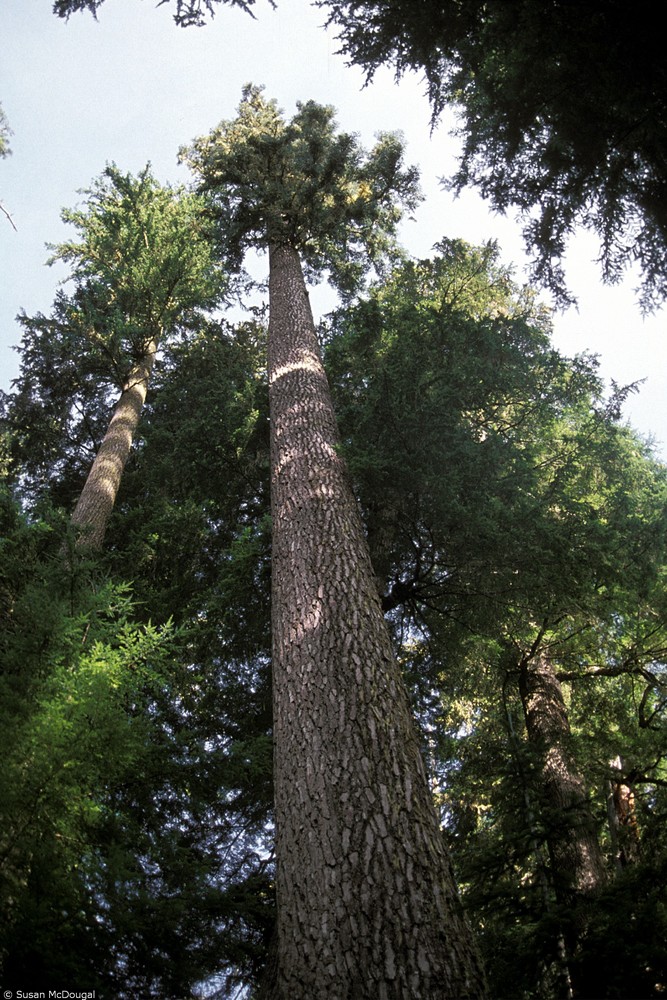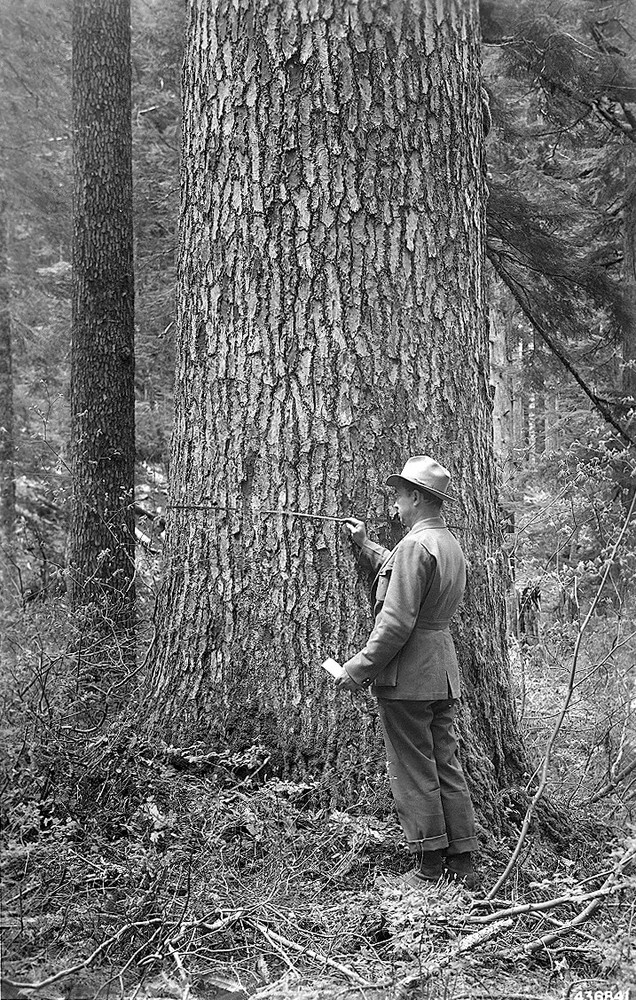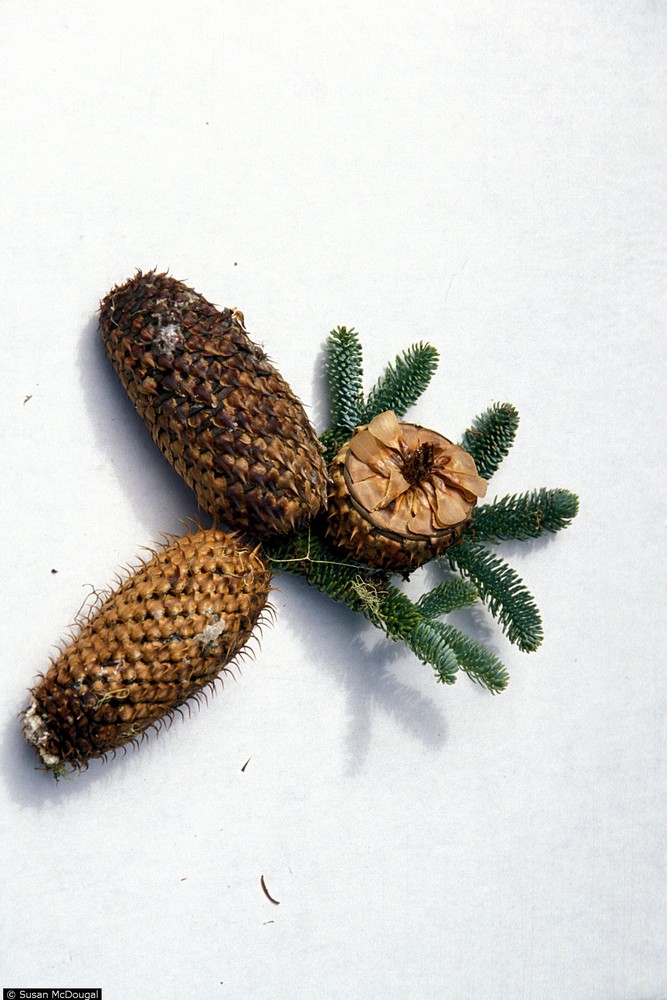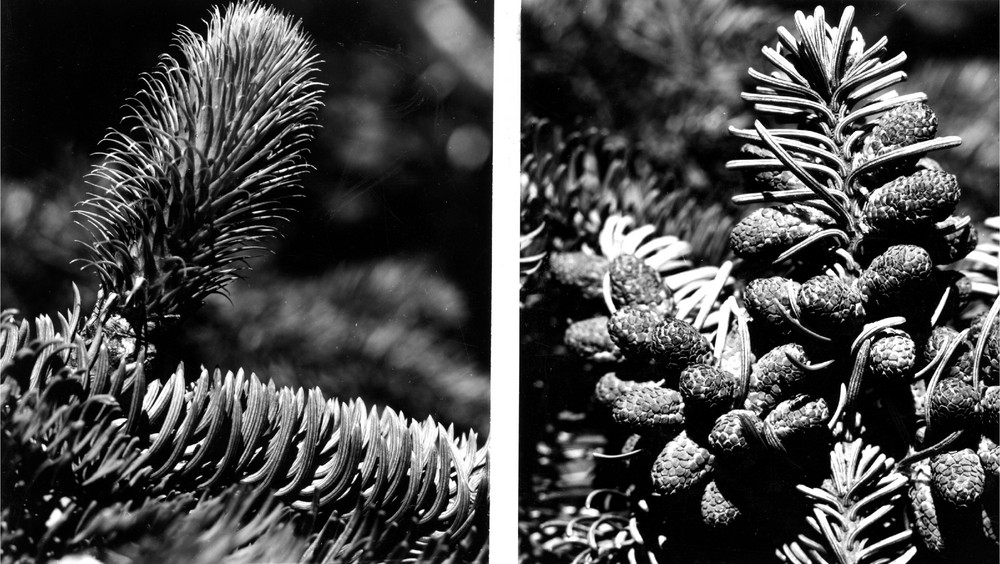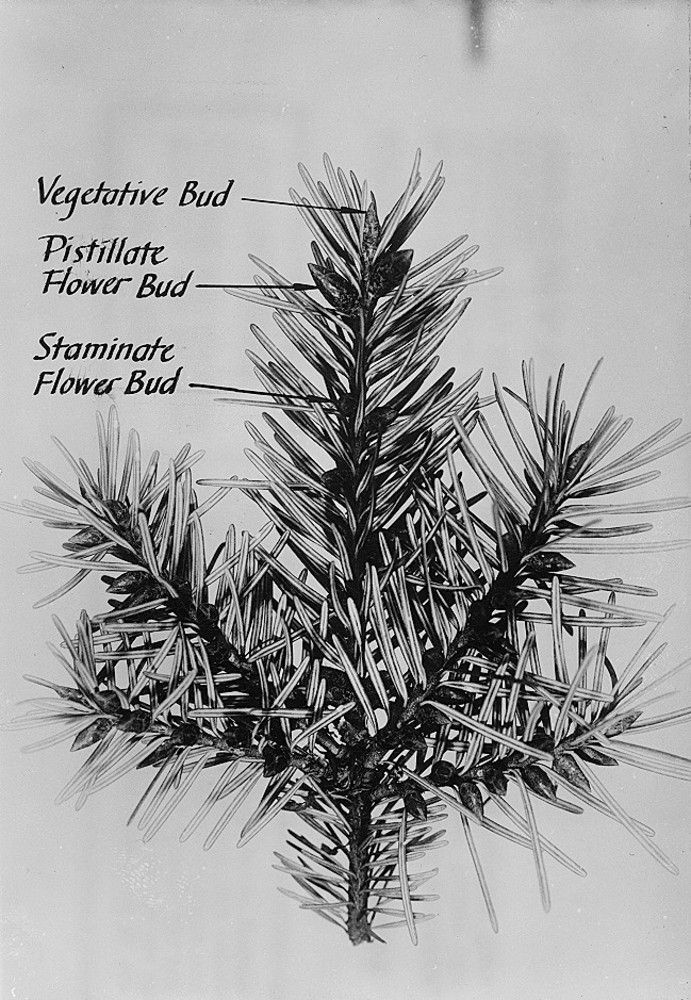Noble fir (Abies procera), also known as red fir or larch, is indeed noble, tallest of the true fir genus Abies. Its generic name, Abies, means rising-one, from the ancient Latin abeo, meaning tall tree or ship. The species name, procera, means very tall or long. Its well-known synonym, A. nobilis, means a famous, grand, notable, or noble tall tree. David Douglas, who first collected the noble fir in 1825 in the high mountains near the Cascades of the Columbia River, bestowed this name on his discovery. Unfortunately, the botanical rules of nomenclature required a name change when it was discovered that Abies nobilis had already been used for a different tree.
The timber industry called noble fir "larches" because of an early bias against true firs. This explains why two mountains—one in Oregon, the other in Washington State—both covered with noble fir, are named Larch Mountain.
Noble fir grows at higher elevations of the Coast Mountains, from the Willapa Hills of Washington to Mary's Peak near Corvallis. It is abundant in the Cascades from Stevens Pass in Washington south to McKenzie Pass in the Oregon Cascades. South of McKenzie Pass and into the Klamath Mountains, identity becomes complicated by hybridization with California red fir (Abies magnifica). Hybrids are referred to as Abies magnifica variety shastensis or A. procera x magnifica (see Shasta fir entry).
Noble fir grows at middle to high elevations under cool, moist conditions. It is relatively shade intolerant and cannot tolerate fire. At higher elevations in the southern part of its range, where summers are hotter and drier, hybrid individuals with thicker, more fire-resistant bark are found.
The Oregon State champion, 205 feet tall and 6 feet 4.39 inches in diameter, grows in the Willamette National Forest in Linn County. The world champion, at Yellow Jacket Creek in the Gifford Pinchot National Forest in Washington State, was 278 feet tall and 9 feet 6 inches in diameter. After losing 27 feet of its top to wind, it remains champion because of its bulk. The largest noble firs are in the southern Washington Cascade Mountains.
People have found a variety of uses for Noble fir. Paiutes traditionally used its branches and needles as a cold remedy. Noble fir is a desirable timber tree for its strong, lightweight wood and, like Sitka spruce, was used to build ladders and in the construction of World War II fighter planes because of its high weight/strength ratio. Other uses include siding, paneling, window sashes, doors, and paper. Noble fir makes up 25 to 30 percent of Christmas trees grown in the Pacific Northwest. It is popular because of its symmetrical appearance, stiff branches, and longevity as a cut tree.
-
![Noble fir.]()
Noble fir, looking up.
Noble fir. Photo by Susan McDougall, USDA-NRCS PLANTS Database
-
![Noble fir, 1945.]()
Noble fir, base of.
Noble fir, 1945. Photo by Ray M. Filloon available at USDA-NRCS PLANTS Database
-
![Noble Fir.]()
Noble fir, detail, 2.
Noble Fir. Photo by Susan McDougall, USDA-NRCS PLANTS Database
-
![Noble fir.]()
Noble fir, detail.
Noble fir. Courtesy USDA-NRCS PLANTS Database
Related Entries
-
![Cascade Mountain Range in Oregon]()
Cascade Mountain Range in Oregon
The Cascade mountain system extends from northern California to central…
-
![David Douglas (1799-1834)]()
David Douglas (1799-1834)
David Douglas is one of the best-known botanists in Oregon history, pri…
-
![Douglas-fir]()
Douglas-fir
Douglas-fir (Pseudotsuga menziesii), perhaps the most common tree in Or…
-
![Willamette National Forest]()
Willamette National Forest
The Willamette National Forest stretches along the western slope of …
Further Reading
Arno, S.F., and R.P. Hammerly. Northwest Trees: Identifying and Understanding our Native Trees, rev. ed. Seattle: Mountaineers, 2007.
Farjon, A. A Natural History of Conifers. Portland: Timber Press. 2008.
Jensen, E.C., and C.R. Ross. Trees to Know in Oregon, rev. ed. Corvallis: Oregon State University Extension Service, 2005.
Moerman, D.E. Native American Ethnobotany. Portland, Ore.: Timber Press. 1998.

